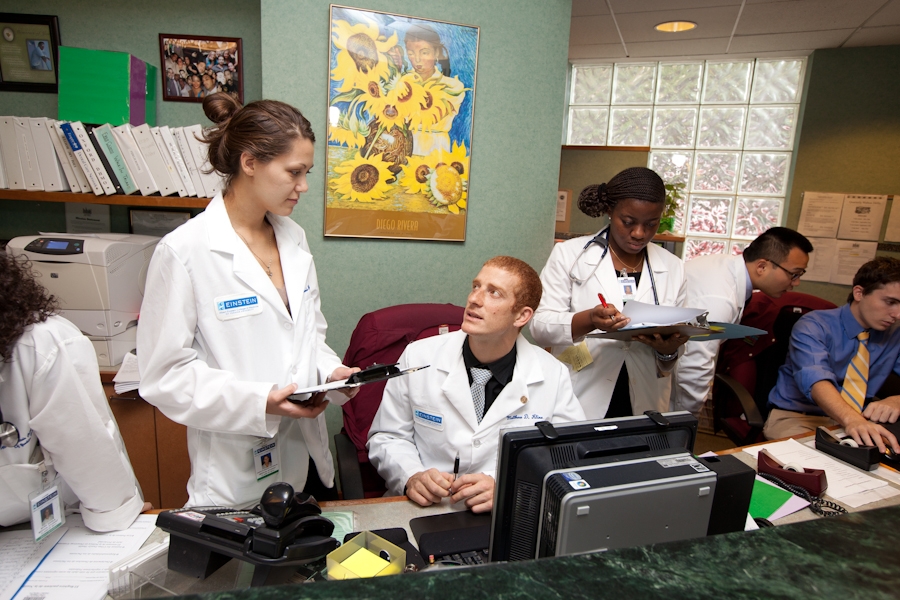
Third-year students taking part in Einstein Community Health Outreach (ECHO), a student-organized clinic providing free routine medical exams and counseling to those in need.
Ask any doctor to tell you about a patient she took care of as a third-year medical student and be prepared for an answer rich in detail and nostalgia. It is a crucial and momentous time of growth in the development of every physician. You hit the wards filled with the knowledge gained from the first two years and are charged with the responsibility of applying that knowledge to the care of real people. At the same time you must continue to build your fund of knowledge despite the fast pace and demanding hours of clinical work. That is why the excitement of moving on to the third year is mixed with anxiety about how to select rotations and excel in the clinical setting.
At Einstein the pressure of deciding which rotations to take in which order has been lifted from the students; all receive fixed orders of rotations for the entire third year by lottery from the registrar’s office. The order is not important—each clerkship is an essential and complementary learning experience. They are run on multiple hospital campuses in the Bronx, Long Island, Manhattan and Brooklyn. Students select their sites through a lottery prior to each rotation. By selecting rotations at a variety of sites, students can maximize the learning opportunity of getting to know different hospitals and patient populations. Note: at Einstein, most students get a site from among their top three choices for each rotation.
Whatever medical school you attend, you will quickly find that learning on the wards is different from learning in lectures. The pace is set by the clinical conditions of the patients and the workflow of the ward, operating room or clinic. Information zooms by and there is always more to do. I cannot stress strongly enough that the first step toward excelling on the wards is to come in with a solid base of knowledge from your basic-science years! It is a cliché but very apt: the stronger the “web of knowledge,” the easier it is to “catch” and incorporate new knowledge in a busy setting. That’s why you must approach the first two years with determination to learn the material in a systematic fashion for long-term retention.
The three pillars of an outstanding clerkship performance are clinical skill, knowledge and professionalism. To get the most from every day on the wards, work hard, take initiative, see as many patients as possible, be a team player and learn from all the members of the team.
To cement your growing fund of knowledge: read, read, read. Read narrowly and broadly. By this I mean read about each patient in depth, as there is nothing to help you retain knowledge like its practical application to a real person. But also use each case to jump into a review of broader topics. Set an agenda and pace yourself to cover all the material in a standard text for each clerkship. Study for the shelf exam by reading and answering sample questions. Show professionalism in all your endeavors. Take responsibility, follow through on your assignments, be on time, be honest.
Finally, take joy in the work you are doing! Through hard work you will not just excel, you will thrive and grow into the best doctor you can be.
Be sure to check out our #MedMo page for tips about getting into and getting through medical school!

